Jinfeng Du
Self-Nomination: Deep Learning for Decentralized CSI Feedback Reduction in MU-MIMO Systems
Apr 23, 2025



Abstract:This paper introduces a novel deep learning-based user-side feedback reduction framework, termed self-nomination. The goal of self-nomination is to reduce the number of users (UEs) feeding back channel state information (CSI) to the base station (BS), by letting each UE decide whether to feed back based on its estimated likelihood of being scheduled and its potential contribution to precoding in a multiuser MIMO (MU-MIMO) downlink. Unlike SNR- or SINR-based thresholding methods, the proposed approach uses rich spatial channel statistics and learns nontrivial correlation effects that affect eventual MU-MIMO scheduling decisions. To train the self-nomination network under an average feedback constraint, we propose two different strategies: one based on direct optimization with gradient approximations, and another using policy gradient-based optimization with a stochastic Bernoulli policy to handle non-differentiable scheduling. The framework also supports proportional-fair scheduling by incorporating dynamic user weights. Numerical results confirm that the proposed self-nomination method significantly reduces CSI feedback overhead. Compared to baseline feedback methods, self-nomination can reduce feedback by as much as 65%, saving not only bandwidth but also allowing many UEs to avoid feedback altogether (and thus, potentially enter a sleep mode). Self-nomination achieves this significant savings with negligible reduction in sum-rate or fairness.
Channel and Spectrum Consumption Models for Urban Outdoor-to-Outdoor 28 GHz Wireless
Mar 14, 2025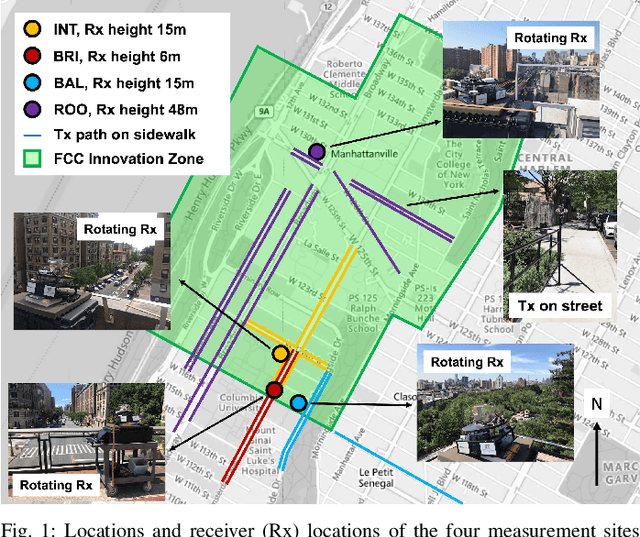
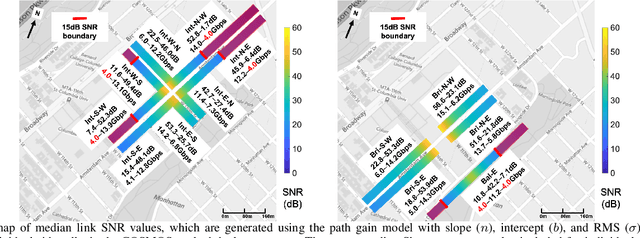
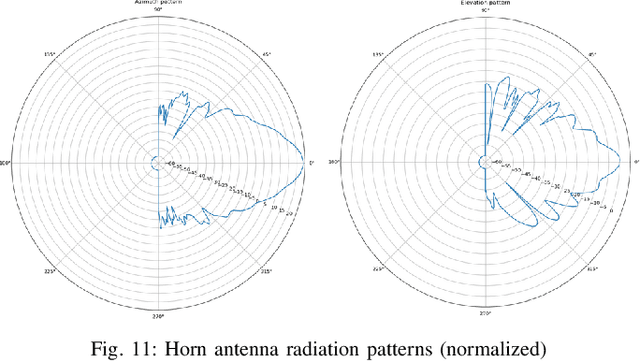
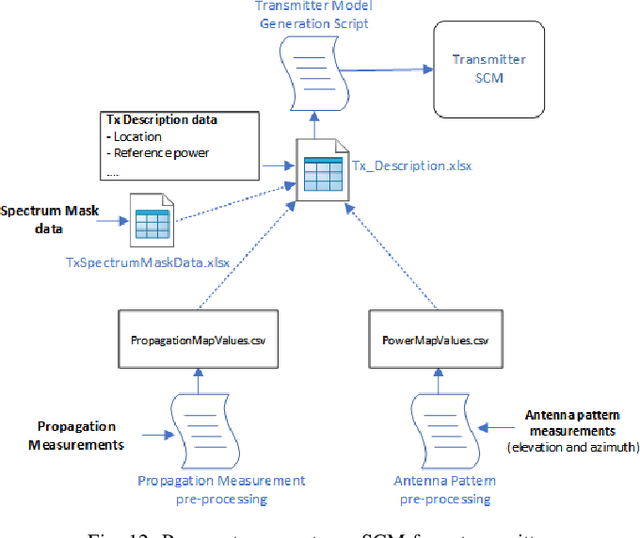
Abstract:Next generation wireless and mobile networks will utilize millimeter-wave (mmWave) communication to achieve significantly increased data rates. However, since mmWave radio signals experience high path loss, the operation of mmWave networks will require accurate channel models designed for specific deployment sites. In this paper, we focus on the deployment area of the PAWR COSMOS testbed in New York City and report extensive 28 GHz channel measurements. These include over 46 million power measurements collected from over 3,000 links on 24 sidewalks at 4 different sites and in different settings. Using these measurements, we study the effects of the setup and environments (e.g., transmitter height and seasonal effects). We then discuss the obtained path gain values and their fitted lines, and the resulting effective azimuth beamforming gain. Based on these results, we also study the link SNR values that can be supported on individual sidewalks and the corresponding theoretically achievable data rates. Finally, we develop a process to transform the measurements and generate Spectrum Consumption Models (SCMs) based on the IEEE 1900.5.2 standard. The generated SCMs facilitate the evaluation of spectrum sharing and interference management scenarios since they capture all the directional propagation effects reflected in the measurements and provide a way to easily share the main propagation characterization results derived from the measurements. We believe that the results can inform the COSMOS testbed deployment process and provide a benchmark for other deployment efforts in dense urban areas.
Beamforming with hybrid reconfigurable parasitic antenna arrays
Feb 25, 2025Abstract:A parasitic reconfigurable antenna array is a low-power approach for beamforming using passive tunable elements. Prior work on reconfigurable antennas in communication theory is based on ideal radiation pattern abstractions. It does not address the problem of physical realizability. Beamforming with parasitic elements is inherently difficult because mutual coupling creates non-linearity in the beamforming gain objective. We develop a multi-port circuit-theoretic model of the hybrid array with parasitic elements and antennas with active RF chain validated through electromagnetic simulations with a dipole array. We then derive the beamforming weight of the parasitic element using the theoretical beam pattern expression for the case of a single active antenna and multiple parasitic elements. We show that the parasitic beamforming is challenging because the weights are subject to coupled magnitude and phase constraints. We simplify the beamforming optimization problem using a shift-of-origin transformation to the typical unit-modulus beamforming weight. With this transformation, we derive a closed-form solution for the reconfigurable parasitic reactance. We generalize this solution to the multi-active multi-parasitic hybrid array operating in a multi-path channel. Our proposed hybrid architecture with parasitic elements outperforms conventional architectures in terms of energy efficiency.
Multi-level Reliability Interface for Semantic Communications over Wireless Networks
Jul 07, 2024Abstract:Semantic communication, when examined through the lens of joint source-channel coding (JSCC), maps source messages directly into channel input symbols, where the measure of success is defined by end-to-end distortion rather than traditional metrics such as block error rate. Previous studies have shown significant improvements achieved through deep learning (DL)-driven JSCC compared to traditional separate source and channel coding. However, JSCC is impractical in existing communication networks, where application and network providers are typically different entities connected over general-purpose TCP/IP links. In this paper, we propose designing the source and channel mappings separately and sequentially via a novel multi-level reliability interface. This conceptual interface enables semi-JSCC at both the learned source and channel mappers and achieves many of the gains observed in existing DL-based JSCC work (which would require a fully joint design between the application and the network), such as lower end-to-end distortion and graceful degradation of distortion with channel quality. We believe this work represents an important step towards realizing semantic communications in wireless networks.
A generalization of the achievable rate of a MISO system using Bode-Fano wideband matching theory
Oct 15, 2023

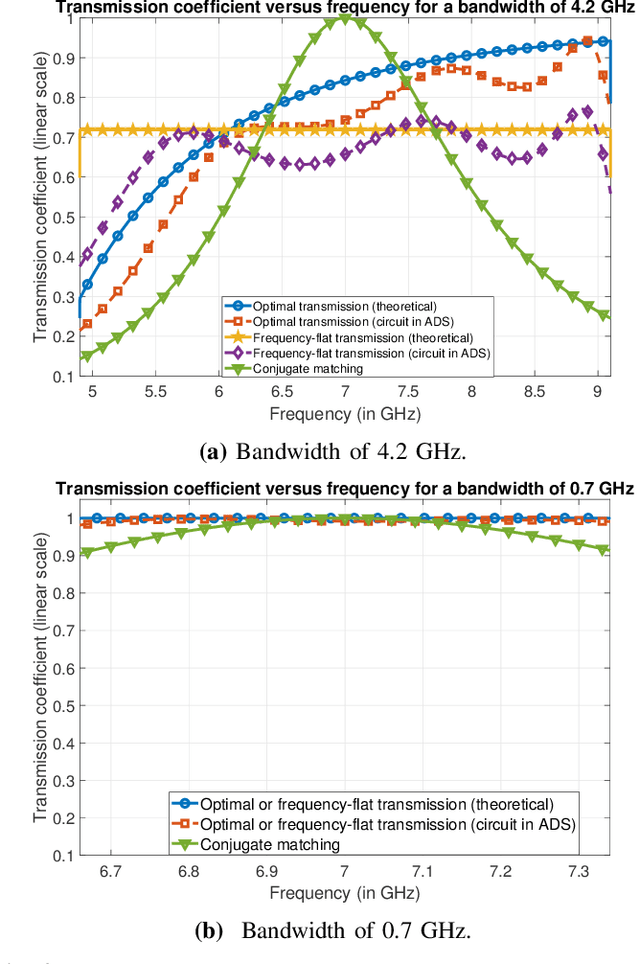
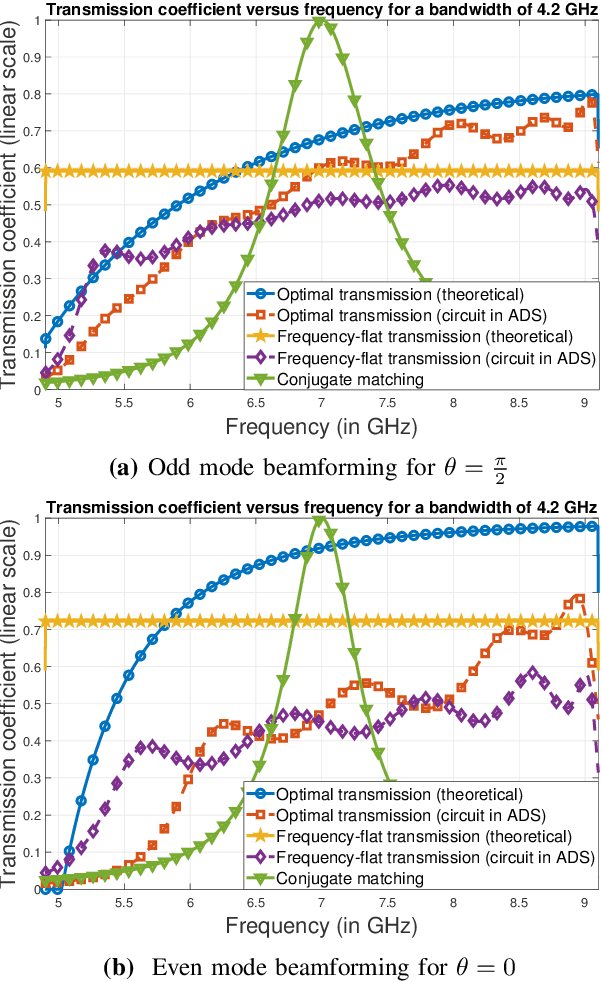
Abstract:Impedance-matching networks affect power transfer from the radio frequency (RF) chains to the antennas. Their design impacts the signal to noise ratio (SNR) and the achievable rate. In this paper, we maximize the information-theoretic achievable rate of a multiple-input-single-output (MISO) system with wideband matching constraints. Using a multiport circuit theory approach with frequency-selective scattering parameters, we propose a general framework for optimizing the MISO achievable rate that incorporates Bode-Fano wideband matching theory. We express the solution to the achievable rate optimization problem in terms of the optimized transmission coefficient and the Lagrangian parameters corresponding to the Bode-Fano inequality constraints. We apply this framework to a single electric Chu's antenna and an array of two electric Chu's antennas. We compare the optimized achievable rate obtained numerically with other benchmarks like the ideal achievable rate computed by disregarding matching constraints and the achievable rate obtained by using sub-optimal matching strategies like conjugate matching and frequency-flat transmission. We also propose a practical methodology to approximate the achievable rate bound by using the optimal transmission coefficient to derive a physically realizable matching network through the ADS software.
Trade-Off Between Beamforming and Macro-Diversity Gains in Distributed mMIMO
Sep 10, 2023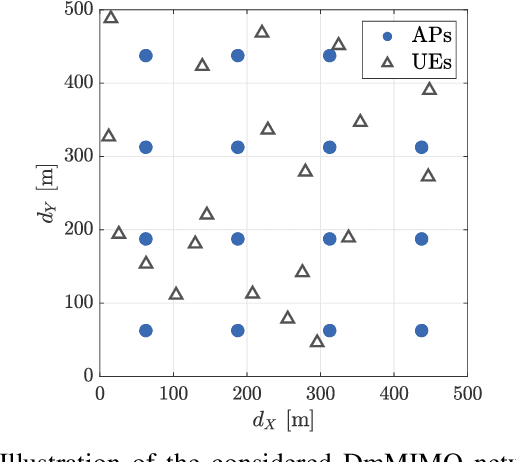
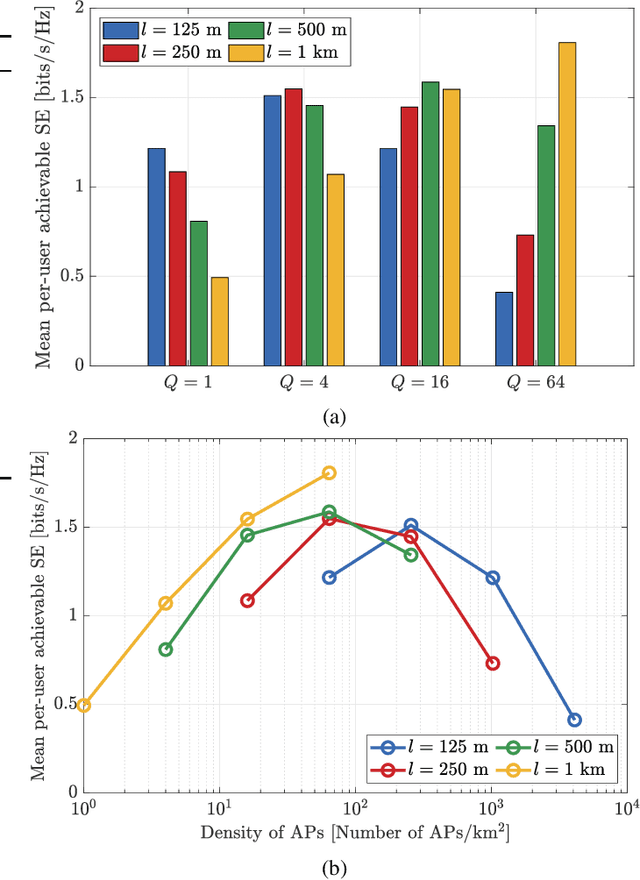
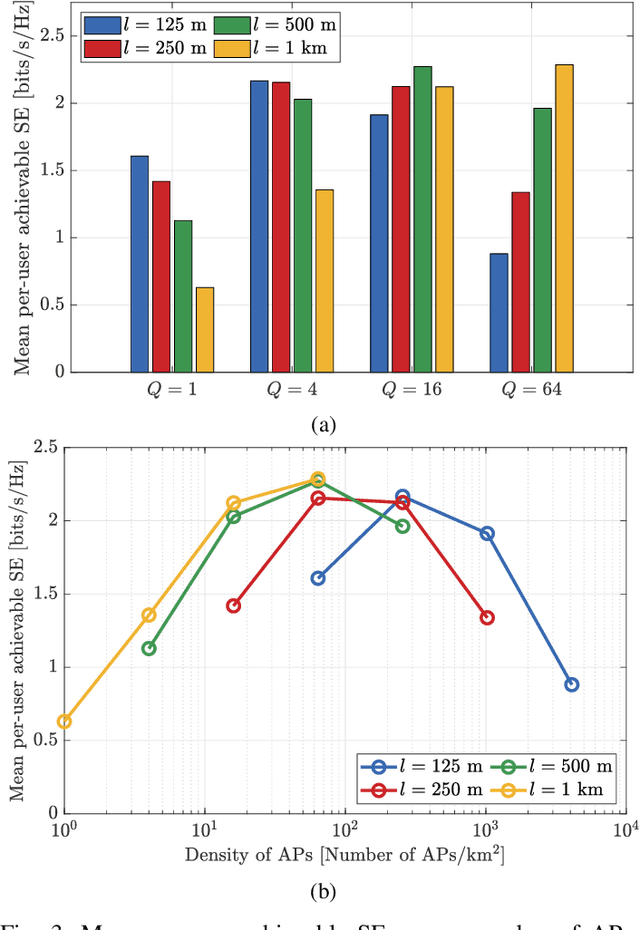
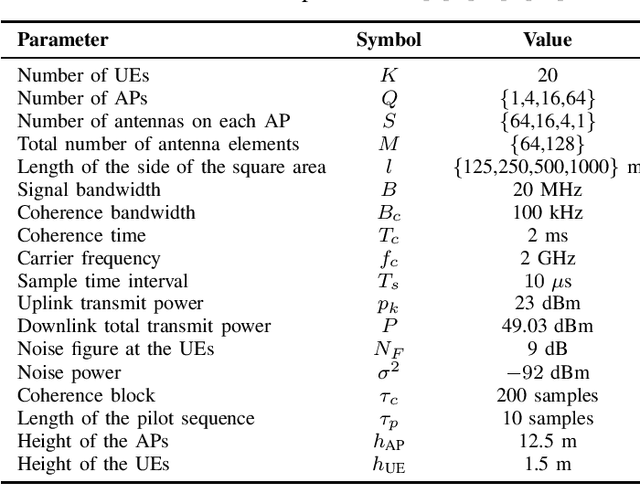
Abstract:Industry and academia have been working towards the evolution from Centralized massive Multiple-Input Multiple-Output (CmMIMO) to Distributed mMIMO (DmMIMO) architectures. Instead of splitting a coverage area into many cells, each served by a single Base Station equipped with several antennas, the whole coverage area is jointly covered by several Access Points (AP) equipped with few or single antennas. Nevertheless, when choosing between deploying more APs with few or single antennas or fewer APs equipped with many antennas, one observes an inherent trade-off between the beamforming and macro-diversity gains that has not been investigated in the literature. Given a total number of antenna elements and total downlink power, under a channel model that takes into account a probability of Line-of-Sight (LoS) as a function of the distance between the User Equipments (UEs) and APs, our numerical results show that there exists a ``sweet spot" on the optimal number of APs and of antenna elements per AP which is a function of the physical dimensions of the coverage area.
Precoding-oriented Massive MIMO CSI Feedback Design
Feb 22, 2023

Abstract:Downlink massive multiple-input multiple-output (MIMO) precoding algorithms in frequency division duplexing (FDD) systems rely on accurate channel state information (CSI) feedback from users. In this paper, we analyze the tradeoff between the CSI feedback overhead and the performance achieved by the users in systems in terms of achievable rate. The final goal of the proposed system is to determine the beamforming information (i.e., precoding) from channel realizations. We employ a deep learning-based approach to design the end-to-end precoding-oriented feedback architecture, that includes learned pilots, users' compressors, and base station processing. We propose a loss function that maximizes the sum of achievable rates with minimal feedback overhead. Simulation results show that our approach outperforms previous precoding-oriented methods, and provides more efficient solutions with respect to conventional methods that separate the CSI compression blocks from the precoding processing.
Energy Efficient Design of Extreme Massive MIMO
Jan 13, 2023



Abstract:Ever since the invention of Bell Laboratories Layer Space-Time (BLAST) in mid 1990s, the focus of MIMO research and development has been largely on pushing the limit of spectral efficiency. While massive MIMO technologies laid the foundation of high throughput in 5G and beyond, energy efficiency of the associated radio system leaves much room for improvement. With the substantial negative implications of climate change looming ever closer, enabling sustainability is of paramount importance for any future technology, and minimizing energy use is a key dimension of achieving sustainability. Thus, every aspect of 6G design, implementation, and operation will be scrutinized to maximize energy efficiency. An analysis of the massive MIMO 5G radio energy consumption at different loads reveals under what specific conditions 6G should outperform 5G, setting qualitative energy efficiency design goals for 6G. Following this, we propose some design principles for the 6G, focusing on novel operational, component technology, and architecture innovations to minimize energy consumption.
A wideband generalization of the near-field region for extremely large phased-arrays
Jun 30, 2022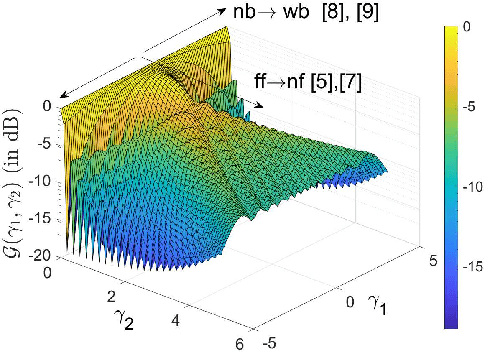
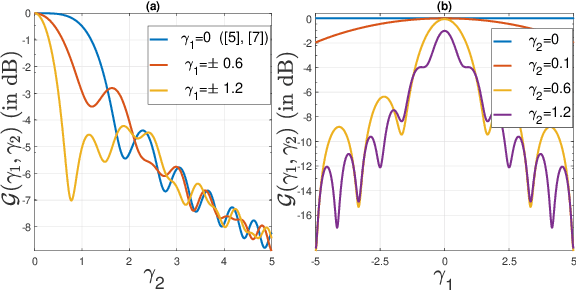
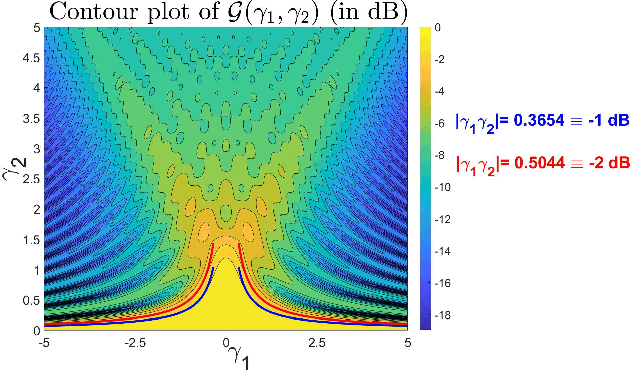
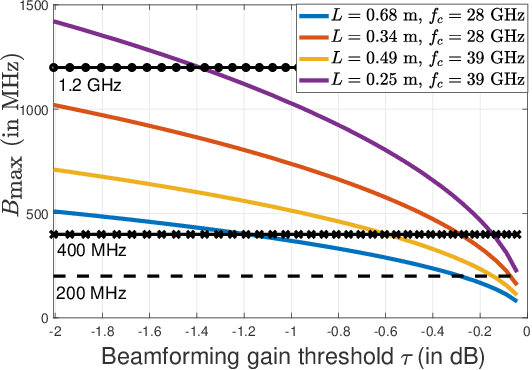
Abstract:The narrowband and far-field assumption in conventional wireless system design leads to a mismatch with the optimal beamforming required for wideband and near-field systems. This discrepancy is exacerbated for larger apertures and bandwidths. To characterize the behavior of near-field and wideband systems, we derive the beamforming gain expression achieved by a frequency-flat phased array designed for plane-wave propagation. To determine the far-field to near-field boundary for a wideband system, we propose a frequency-selective distance metric. The proposed far-field threshold increases for frequencies away from the center frequency. The analysis results in a fundamental upper bound on the product of the array aperture and the system bandwidth. We present numerical results to illustrate how the gain threshold affects the maximum usable bandwidth for the n260 and n261 5G NR bands.
Outdoor-to-Indoor 28 GHz Wireless Measurements in Manhattan: Path Loss, Environmental Effects, and 90% Coverage
May 19, 2022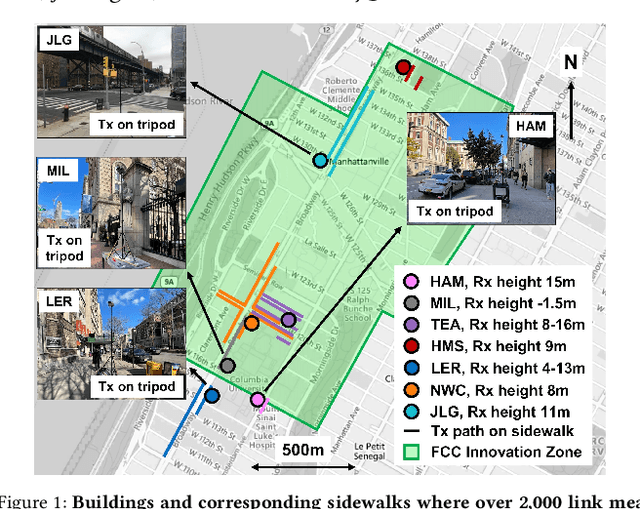

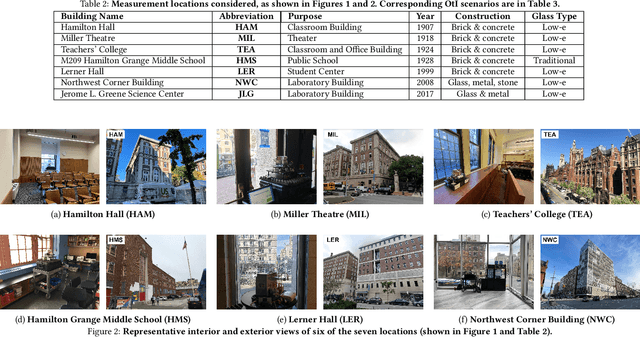
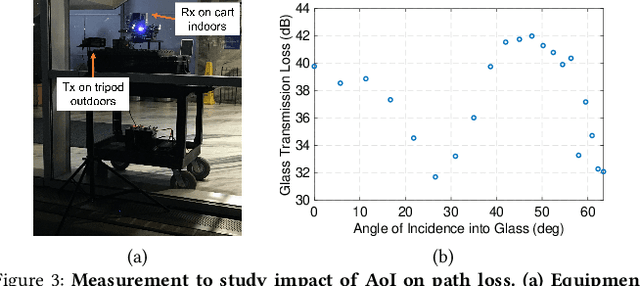
Abstract:Outdoor-to-indoor (OtI) signal propagation further challenges the already tight link budgets at millimeter-wave (mmWave). To gain insight into OtI mmWave scenarios at 28 GHz, we conducted an extensive measurement campaign consisting of over 2,200 link measurements. In total, 43 OtI scenarios were measured in West Harlem, New York City, covering seven highly diverse buildings. The measured OtI path gain can vary by up to 40 dB for a given link distance, and the empirical path gain model for all data shows an average of 30 dB excess loss over free space at distances beyond 50 m, with an RMS fitting error of 11.7 dB. The type of glass is found to be the single dominant feature for OtI loss, with 20 dB observed difference between empirical path gain models for scenarios with low-loss and high-loss glass. The presence of scaffolding, tree foliage, or elevated subway tracks, as well as difference in floor height are each found to have an impact between 5-10 dB. We show that for urban buildings with high-loss glass, OtI coverage can support 500 Mbps for 90% of indoor user equipment (UEs) with a base station (BS) antenna placed up to 49 m away. For buildings with low-loss glass, such as our case study covering multiple classrooms of a public school, data rates over 2.5/1.2 Gbps are possible from a BS 68/175 m away from the school building, when a line-of-sight path is available. We expect these results to be useful for the deployment of mmWave networks in dense urban environments as well as the development of relevant scheduling and beam management algorithms.
 Add to Chrome
Add to Chrome Add to Firefox
Add to Firefox Add to Edge
Add to Edge